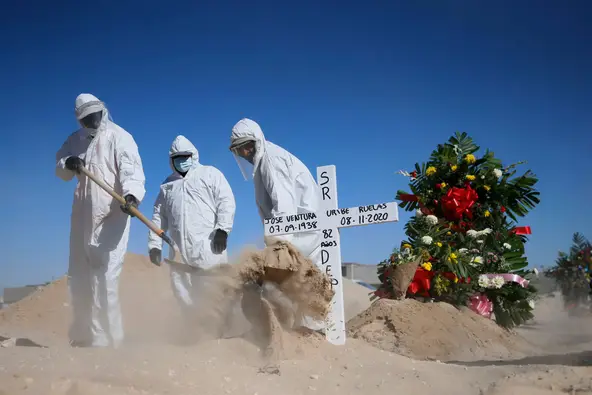The USPS landing page for the program points back to covidtests.gov for more information on other free COVID-19 testing options. However, the government website simply advises on where to purchase tests, saying “At-home COVID-19 tests are sold at pharmacies, grocery stores and many other retailers nationwide.”
The agency did not indicate whether the suspension is permanent or temporary as with past closures. The HSS did not immediately respond to request for comment.
Free program sent more than 900 million COVID tests to American households
The news comes less than a month after the Washington Post reported that the Trump administration had reversed a decision to shut down the program and potentially dispose of or destroy 160 million, or more than half a billion dollars worth, of mostly unexpired tests.
The initiative was originally supposed to be shuttered on Feb. 18 but just minutes before the site was set to go dark, Human Services spokesman Andrew Nixon issued a statement saying it would remain open for the time being. He also told the newspaper that unexpired stockpiled tests would not be destroyed.
“With COVID-19 infections decreasing after a winter peak, we are in the process of regular discussions on closing this round of the COVID-19 test ordering program. At this point, the program is still open, and we will share additional updates as needed,” the statement sent to the Post said.
The ASPR, in partnership with USPS, had sent more than 900 million tests directly to U.S. households via covidtests.gov by Oct. 2024, according to a USPS release from that time. Millions more were distributed to community centers including nursing homes, libraries, local health departments and food banks.
How COVID-19 changed everything: A look back
On Jan. 20, 2020, laboratory tests confirmed that man in his 30s who had recently returned from Wuhan, China was infected with the novel coronavirus, which hadn’t yet been named.
Other ways to get free or cheap COVID testing
COVID antigen tests generally cost between $12-$35 dollars for a pack of two at pharmacies and retail locations, though the price can be even higher. PCR testing done by a medical professional can cost much more, depending on your insurance coverage.
The Centers for Disease Control and Prevention is still offering free testing for uninsured adults who have symptoms of or have been exposed to COVID through the Increasing Community Access to Testing, Treatment and Response (ICATT) program.
Around 10,000 ICATT sites nationwide continue to offer testing and disease surveillance in non-emergency situations to uninsured people and more than 19,000 are offering no-cost COVID-19 vaccines under the CDC Bridge Access program.
A list of free COVID-19 testing sites can be found on the COVID-19 Testing Locator website. Locations offering free vaccines can be found at vaccines.gov.
Some insurance plans also cover the full cost of COVID-19 tests. You can check your eligibility and order these insurance-covered tests through pharmacies like Walgreens and CVS.
Your state, county or city health department may also have free or low-cost testing sites operating out of community locations like churches, rec centers and schools. Check your local departments’ websites and social media channels or give them a call to ask about accessible testing options.




